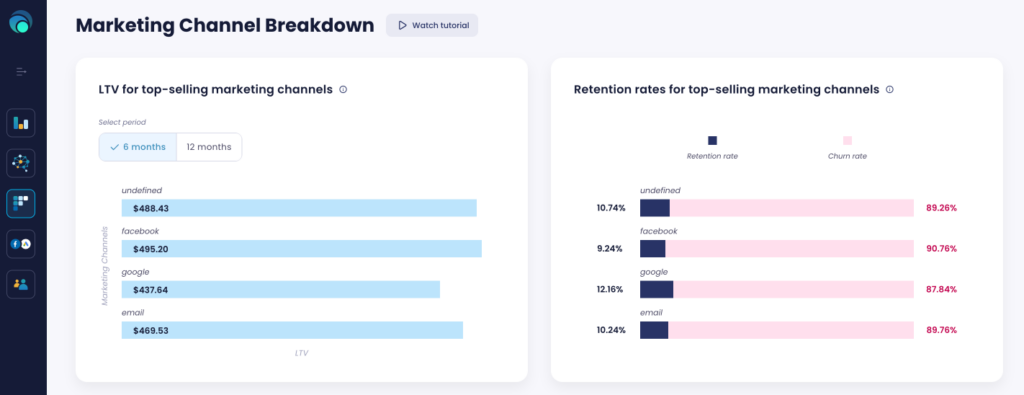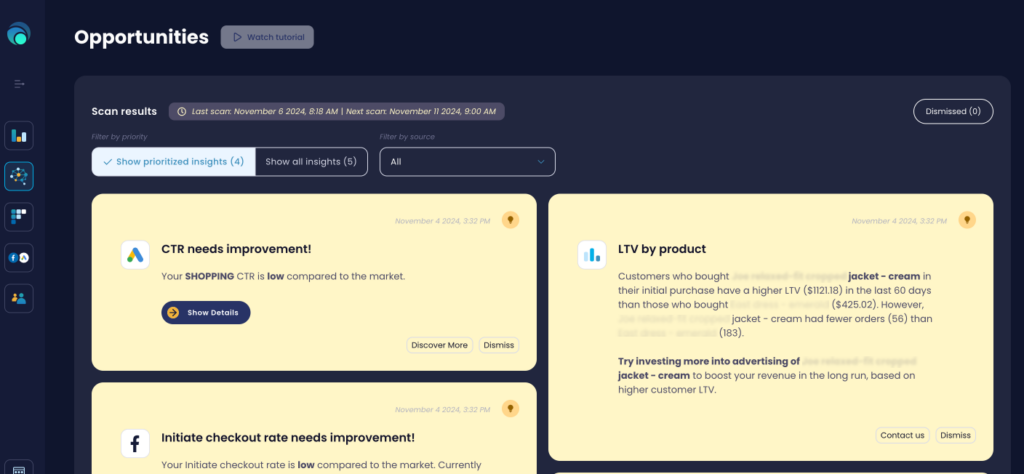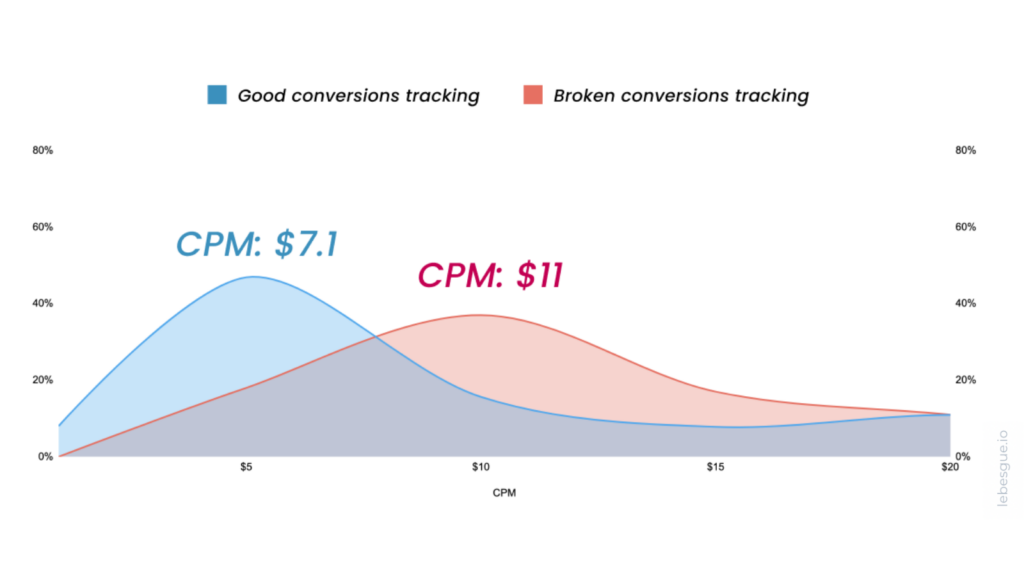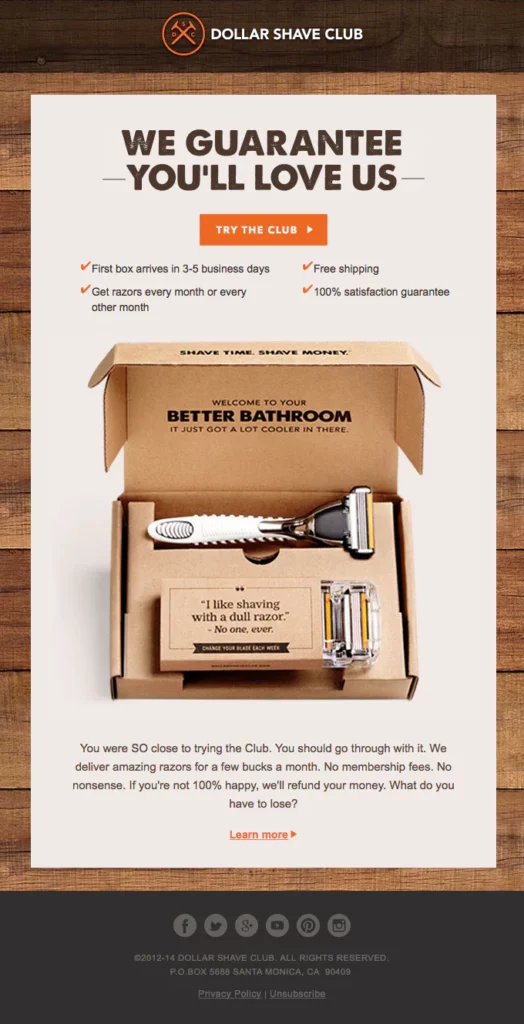As competition intensifies in the online marketplace, ecommerce growth strategies are more important than ever. With rising ad costs, a flood of new brands, and ever-higher customer expectations, how can your business stand out and sustain growth?
In this blog post, we’ll dive into the reasons behind the surge in ecommerce competition and reveal the strategies that can help your business not just survive but thrive in today’s crowded digital space.
Why your ecommerce business needs a growth strategy
An ecommerce growth strategy is a comprehensive plan that outlines how an online business can increase its revenue, acquire new customers, and retain existing ones. And with the rapid increase in ecommerce shops, having a growth strategy is no longer optional—it’s essential.
As competition intensifies and advertising costs rise, businesses must optimize their marketing efforts to effectively reach their target audience. A solid strategy not only helps reduce customer acquisition costs but also focuses on customer retention, which is significantly more cost-effective than constantly acquiring new customers.
Moreover, with consumers expecting fast and personalized shopping experiences, an e-commerce growth strategy allows businesses to meet these demands, streamline operations, and ultimately drive long-term, sustainable success in a competitive market.
7 ecommerce growth strategies to boost revenue in 2025
Discover 7 ecommerce growth strategies designed to help your business scale in 2025. These strategies offer a mix of new opportunities and ways to improve existing practices.
Whether you’re looking to implement fresh tactics or fine-tune what’s already working, these insights will help you maximize revenue and stay ahead in a competitive market.
Here are some effective growth strategies for ecommerce businesses:
Optimize your marketing channels
Leverage content marketing and SEO
Use social proof and user-generated content
Retargeting and customer retention
Referral marketing
Personalized customer experience
Data-driven decision making.
Now, let’s see how you can use each strategy for your business.
Optimize your marketing channels
Let’s start with paid advertising. If you’re running ads on platforms like Meta, Google, and TikTok, the goal is to optimize for purchases.
However, one of the biggest mistakes businesses make is failing to ensure that their conversion tracking is set up and working correctly.
Without accurate data, your business could be leaving money on the table.
Proper conversion tracking is crucial. If the tracking is broken—whether it’s the Facebook pixel, Google conversion tracking, or the TikTok pixel—your business could see a significant loss in revenue. For example, with Facebook and TikTok, broken conversion tracking can lead to up to a 30% higher CPM. This happens because the platforms aren’t getting accurate data on how users are interacting with your ads, leading to inefficient ad spending.
On Google, things can get even worse. When multiple events are set up to track conversions, Google Ads can overreport performance—counting one purchase as multiple conversions. This misleads the algorithm, causing it to overbid on your ads, as the system thinks the performance is better than it actually is. As a result, your reports become inaccurate and misleading, which can harm your ad strategy and waste your budget.
Leverage content marketing and SEO
Focusing on E-A-T (Expertise, Authoritativeness, and Trustworthiness) is essential, especially as many websites have seen drops in SEO rankings.
Google’s algorithm updates, particularly those related to Core Web Vitals and Quality Rater Guidelines, have put more emphasis on these factors to ensure that search results provide users with reliable, high-quality information.
Websites that provide high-quality, relevant content tend to rank better. If your content shows that you are an expert in your field and gives users valuable information, search engines will reward it.
Whether it’s through well-researched blog posts, in-depth product descriptions, or accurate, helpful FAQs, content quality plays a major role in SEO.
If you’re seeing a drop in SEO rankings, E-A-T should be a focus. It’s about creating content and building a website that reflects expertise, authority, and trust, which is exactly what Google wants to rank in its search results. While other factors like keyword optimization and backlinks are still important, having strong E-A-T signals is crucial for long-term SEO success, especially for ecommerce sites.
For backlinks, on the other hand, quality remains very important. To build a strong backlink profile, aim for relevance and authority in the links you acquire. One effective approach is to use an SEO tool for building backlinks, which can help you identify high-quality link-building opportunities and track your progress.
Use social proof and user-generated content
And with the importance of social proof for your SEO results, it’s also crucial for your ecommerce growth.
Customer reviews and user-generated content (UGC) not only build trust with potential buyers but also drive higher conversions and boost organic traffic.
Research shows that 79% of consumers trust online reviews as much as personal recommendations, and 91% of consumers regularly or occasionally read online reviews before making a purchase decision (Search Engine Land, 2022). This makes social proof an integral part of your e-commerce strategy, influencing both SEO performance and sales.
Incorporating social proof—such as customer testimonials, ratings, and reviews—directly on your product pages can significantly improve conversion rates. It signals to both customers and search engines that your products are reliable and of high quality.
Retargeting and customer retention
Retargeting ads on Meta can lead to a ROAS of around 280% if optimized correctly.
The key is to target website visitors who haven’t purchased yet by selecting a custom audience and excluding those who have already converted. This strategy helps you focus your budget on potential customers, increasing your chances of a successful conversion.

In addition to retargeting ads, Klaviyo plays a vital role in customer retention through abandoned cart flows. By sending automated emails to users who left items in their cart, you can encourage them to return and complete their purchase. You can also set up re-engagement flows for customers who haven’t interacted with your store recently, offering incentives to bring them back.
Focusing on Customer Lifetime Value (LTV) is essential for sustained growth. In Lebesgue: AI CMO you can analyze LTV by marketing channel, helping you optimize your growth strategy and prioritize efforts that deliver long-term value for your business.

Referral Marketing
Referral marketing can lead to significant business growth.
The referred customers tend to have higher lifetime value—often up to 30% more—and are more likely to make repeat purchases compared to non-referred customers.
Additionally, the cost of acquiring referred customers is typically lower, with estimates showing it can be 20-50% less than traditional acquisition methods.
These findings reflect the effectiveness of referral marketing in driving higher revenue, improving customer retention, and reducing reliance on paid advertising, making it a powerful strategy for sustainable ecommerce growth.
Personalized customer experience
In the context of ecommerce growth, offering a personalized customer experience is a highly effective strategy to boost engagement, increase conversion rates, and drive sales.
By using tools to tailor the shopping experience, you can recommend products based on a customer’s browsing behavior, past purchases, or even abandoned carts. This creates a more relevant and seamless experience for the shopper, making them more likely to complete their purchase.
For example, when customers see products they’ve previously shown interest in or items related to their previous purchases, they feel more understood and valued, which increases their likelihood of buying. Additionally, personalized recommendations can help reduce cart abandonment by reminding customers of items they left behind, often leading to higher sales.
Ensuring a smooth purchasing journey, efficient DTC fulfillment solutions help convert these recommendations into completed transactions by streamlining order processing and fast delivery, enhancing customer satisfaction and loyalty.
Data-driven decision-making
Data-driven decision-making is a crucial ecommerce growth strategy that enables businesses to make informed choices that directly impact their bottom line. By using analytics tools to track key metrics like customer behavior, top-selling products, and campaign performance, you gain valuable insights that help optimize your operations and marketing efforts.
Understanding how customers navigate your website, which products generate the most interest, and which campaigns drive the highest conversion rates allows you to make adjustments that enhance your overall strategy.
A tool like Lebesgue: AI CMO takes this a step further by analyzing your data and comparing it to competitor benchmarks and best practices, helping you identify untapped growth opportunities and areas for improvement.

By making data-driven decisions, ecommerce businesses can refine their product offerings, optimize marketing campaigns, and boost customer retention, leading to improved revenue and sustained growth.
The ability to adapt quickly to market trends and competitor actions gives businesses a competitive edge, ensuring they remain relevant and profitable in an increasingly crowded market.
KPIs for ecommerce growth strategies
When reevaluating your ecommerce growth strategies, it’s essential to track and analyze key performance indicators (KPIs) that offer insights into both the health of your business and the effectiveness of your strategies. Here are some of the most important KPIs to monitor:
- Revenue growth: Directly measures how well your business is growing over time. It’s essential to monitor both overall revenue and revenue by channel (e.g., paid ads, organic traffic, email marketing) to see where your efforts are paying off.
- Customer acquisition cost (CAC): This shows how much you’re spending to acquire a new customer. Lowering your CAC while maintaining or increasing the number of new customers is a sign of improving efficiency in your marketing.
- Conversion rate: The percentage of visitors to your site who make a purchase. Tracking this KPI helps you understand how effective your website, product pages, and checkout process are in persuading customers to buy.
- Customer lifetime value (CLTV): LTV measures the total revenue you can expect from a customer over their entire relationship with your brand. Focusing on increasing LTV through repeat purchases or upselling/cross-selling can lead to more sustainable growth.
- Average order value (AOV): The average amount customers spend per order. Increasing your AOV can significantly boost your revenue without needing to acquire more customers. Strategies like bundling products, offering upsells, and using personalized recommendations can drive this up.
- Return on ad spend (ROAS): For paid advertising campaigns, ROAS is a critical metric to assess the efficiency of your ad spend. A higher ROAS indicates that your ads are generating more revenue for each dollar spent, signaling that your advertising strategies are effective.
Summing Up
To succeed with your ecommerce business, having a clear growth strategy is no longer optional—it’s essential.
By focusing on strategies like optimizing your ad spend, personalizing customer experiences, and utilizing data to drive decisions, you can create a path to sustained growth. The right approach not only increases revenue but also builds long-term customer loyalty and brand recognition.
Keep evaluating key performance metrics to ensure your efforts are paying off and adapt your strategies to stay ahead of the competition. With the right plan in place, your ecommerce business can thrive, even in a crowded market.






